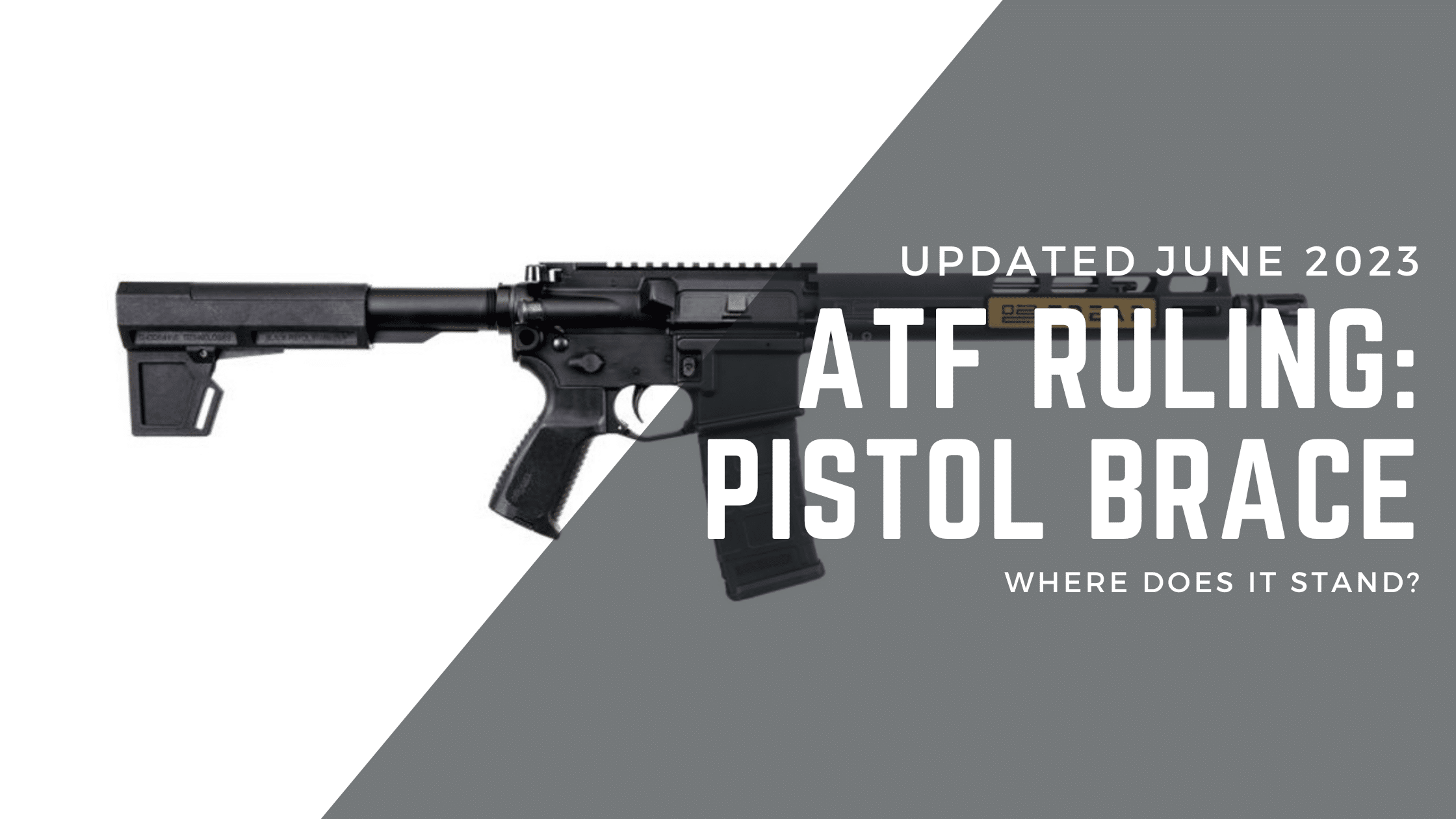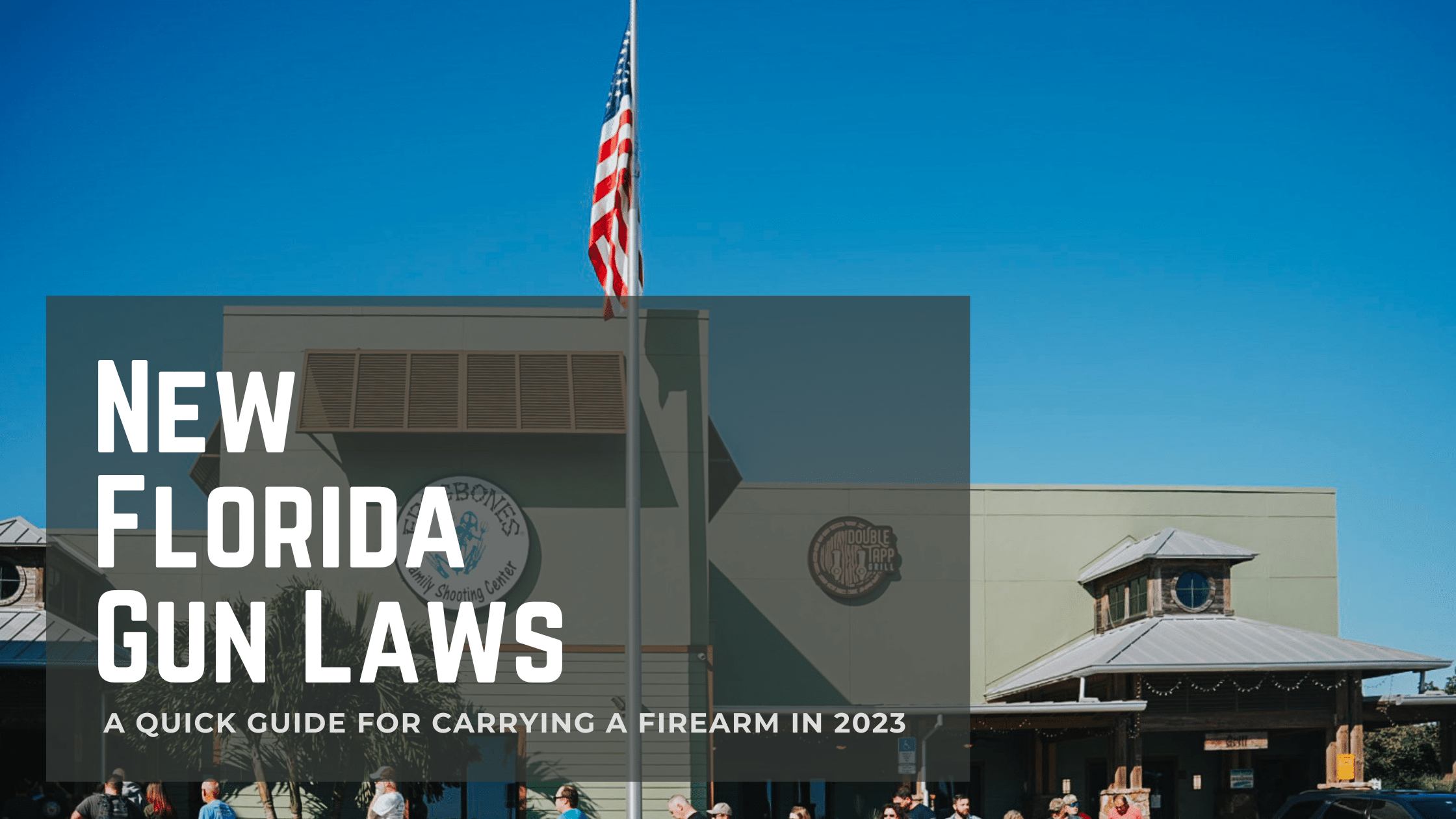ATF Pistol Brace Ruling: Updated

**Disclaimer: This is not legal advice. Please consult an attorney or your local ATF office if you have any questions regarding the ruling.**
Here’s What We Know **UPDATED JUNE 1, 2023**
Owners of firearms with attached “stabilizing braces” have until May 31, 2023 to comply with the ATF’s ruling on affected firearms that were in your possession prior to January 31, 2023.
UPDATE: On May 23rd, The Firearms Policy Coalition (FPC) announced that the Fifth Circuit Court had granted an injunction pending appeal in the Mock v. Garland case. The injunction will delay the implementation of the controversial new ATF pistol brace rule, which was previously set to go into effect on May 1.
The courts ordered that the appeal be expedited “to the next available Oral Argument Calendar. It is further ordered that Appellants’ Opposed Motion For a Preliminary Injunction Pending Appeal is granted as to the Plaintiffs in this case.”
The Mock v. Garland suit was originally shot down by the U.S. District Court for the Northern District of Texas on March 30 — a decision that was subsequently appealed.
It is unknown how much time the injunction will buy brace owners, or if this will ultimately affect the outcome of the case. Regardless, our store as a federally licensed firearms dealer must comply with the regulations of the governing body, the ATF, until the ruling is amended, nullified, or repealed.
We strongly encourage everyone to exercise their rights as responsible American citizens in supporting organizations like The Firearms Policy and others who are litigating these and other issues on behalf of the 2A community. See the bottom of this page for resources to become involved.
How Did We Get Here & What Happened
On January 13, 2023, the Attorney General signed ATF final rule 2021R-08F, “Factoring Criteria for Firearms with Attached ‘Stabilizing Braces,’” amending ATF’s regulations to clarify when a rifle is designed, made, and intended to be fired from the shoulder.
The rule outlines the factors ATF would consider when evaluating firearms equipped with a purported “stabilizing brace” (or other rearward attachment) to determine whether these weapons would be considered a “rifle” or “short-barreled rifle” under the Gun Control Act of 1968, or a “rifle” or “firearm” subject to regulation under the National Firearms Act. The rule’s amended definition of “rifle” clarifies that the term “designed, redesigned, made or remade, and intended to be fired from the shoulder” includes a weapon that is equipped with an accessory, component, or other rearward attachment (e.g., a “stabilizing brace”) that provides surface area that allows the weapon to be fired from the shoulder, provided other factors, as listed in the definition, indicate the weapon is designed and intended to be fired from the shoulder.
This rule does not affect “stabilizing braces” that are objectively designed and intended as a “stabilizing brace” for use by individuals with disabilities, and not for shouldering the weapon as a rifle. Such stabilizing braces are designed to conform to the arm and not as a buttstock. However, if the firearm with the “stabilizing brace” is a short-barreled rifle, it needs to be registered within 120-days from the date of publication in the Federal Register.

Option 1 – Replace the Barrel or the Upper
This will be the easiest and most straight-forward option, simply replace the barrel (or the whole upper) on your pistol with a 16” or longer barrel. This is not an option for all pistols but is an easy route for AR platform guns. If you do go this route, you can either leave the brace on your gun or substitute with a stock. The overall length in the firearm needs to be 26″ in order to be compliant.
Option 2 – Removing the Brace
This option is the simplest – you must remove both the brace and any non-operational parts that the brace attaches to. If the brace is mounted to a folding arm or a buffer tube that is not needed for a gun to function.
The language states:
“Permanently remove and dispose of, or alter, the “stabilizing brace” such that it cannot be reattached”
Removing the brace (and any non-operational mounting) typically requires some basic gunsmithing. If you need assistance, email us at armory@frogbones.com and our armorers will coordinate a time to facilitate the update this must be done on-the-spot. Pricing will vary depending on work needed, a quote will be provided prior to any work completed. Please bring your firearm into our store in accordance with store policy, unloaded and in a case.
If you have an AR-15 pistol, it is as simple as pulling the brace off the buffer tube. The ATF has confirmed that you are legally allowed to leave the 6-position rifle buffer tube on the gun, however you need to be careful of constructive possession (see below for full details).
Option 3 – Forfeit Firearm to ATF
This is an option, but don’t do it! If you’re interested in no longer keeping the firearm in your possession. Worst case you can forfeit the firearm to us – we will make it legal and take the gun onto our books (providing you proof).
Option 4 – Destroy Firearm
This is an option, but again, don’t do it! If you want to get rid of the gun, bring the firearm to us – we will make it legal, take the gun onto our books (providing you proof). If you do choose to destroy, make sure to follow ATF guidelines.
Option 5 – Register as a Short Barreled Rifle (SBR)
This option requires the most work but will allow you to keep your gun exactly as it is! The ATF is waiving the tax stamp if you submit the paperwork to “manufacture” the gun into a SBR yourself by May 31, 2023. The ATF is also not requiring any further engraving on the firearm (previously required) as long as the gun is not a Privately Made Firearm.
You can complete this process yourself by submitting a Form 1 via the ATF website (https://eforms-form1.atf.gov/login). To do this, you will need completed fingerprint cards (electronic or paper). Silencershop is working on getting a form 1 assistance package up and running which will include the fingerprint cards – check their website for information.
Once the form is submitted, you are able to keep the brace on the gun until the form is approved as long as you have proof the form was submitted. The ATF has not provided an estimated turnaround time for approvals. Once the form is approved, you can either keep the brace on the gun, or replace it with a stock.
Note – if you plan to manufacturer/register your SBR under a trust, the ATF requires you to also submit proof that the pistol was owned by the trust prior to ruling date. This would typically be in the form of a “Schedule A Inventory” at the back of a trust document. Not all trusts have this document or allow for you to have non-NFA items in the trust. Contact whoever designed the trust for more information. Otherwise, you must either register under an individual’s name or pay the $200 stamp to register under the trust’s name (engraving may be required for the latter).
Option 6 – Sell the Gun
While it is not legal to sell braced guns after 1/30/2023, we can help! Please contact us at manager@frogbones.com or stop by our store and ask for the manager on duty. We will review what is needed to make the gun legal and make you an offer. If you accept, you will bring in the gun, we will make it legal on-the-spot, then we will purchase the gun and provide you with a receipt. Note that you (and we) are not able to legally transfer possession of a pistol braced gun after 1/30/2023 – the gun must be made legal before transferring.
Constructive Intent
This is an important consideration if you do not plan to register your gun. You do not want to be in possession of items in such a way that it appears you can readily make the firearm into an illegal SBR. The ATF outlined a scenario in a recent webinar:
Joe owns one gun – an AR-15 pistol. To comply with the ruling Joe removes the pistol brace from his gun and puts it in his drawer. He leaves the rifle buffer tube on the gun. Joe is in possession of the parts to build an SBR and the ATF could argue he is in constructive possession of an illegal SBR.
However they stated that if Joe had other rifles and rifle parts, they would likely not look at it the same way. The short of it is that you don’t want to have extra parts that would make your gun into a SBR (ie shorter than 16” upper or a pistol brace) if you don’t have other guns those parts would be legal on (registered SBR lower for the former, AR rifle for the latter).
Where Do I Go For More Information?
For more info from the ATF visit this page – https://www.atf.gov/rules-and-regulations/factoring-criteria-firearms-attached-stabilizing-braces
Think it’s weird that a Federal Agency has the right to enact a law without the buy-in of our elected representatives? We need to remain involved with the fight for our constitutional rights.
Here is what you can do to make a difference:
- Call or email your state’s senators and representatives – https://openstates.org/
- Call or email your local ATF office (be nice! But voice your frustration) – https://www.atf.gov/contact/atf-field-divisions
- Donate to second amendment organizations – we recommend Second Amendment Foundation, Gun Owners of America and Firearm Policy Coalition
We continue to be committed to serving the 2A Community throughout the United States. That being said, we are bound by law to remain compliant with the federal policies in place. To do otherwise would risk legal action against us and revocation of our license. Without which we would be unable to serve the community in their desire to exercise their Second Amendment rights. We appreciate everybody’s patience in navigating these roadblocks and making sure nobody inadvertently ends up in a legal situation because of a brace.





